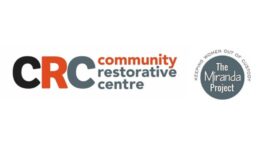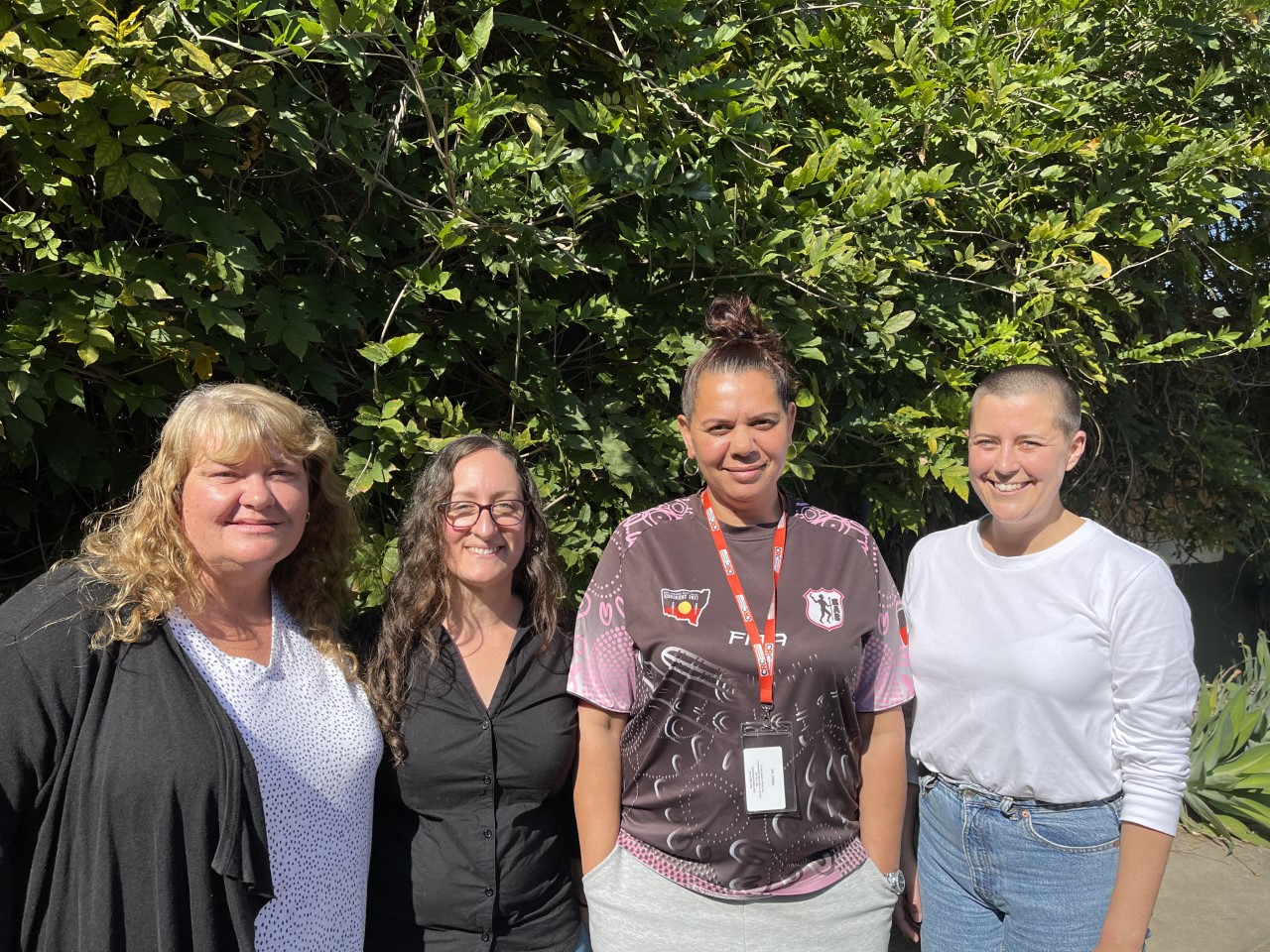Keeping Women Out of Prison: An Interview With the Miranda Project’s Marisa Moliterno

The number of women being incarcerated in the NSW prison system has been rising at a significant rate over recent decades. And no one is suggesting this has anything to do with more women turning to a life of crime. Rather, it’s well understood the rise is due to criminal justice reforms.
A 2018 BOCSAR report revealed that since 2011, the adult women’s prisoner population in NSW had risen by 50 percent. And when it came to First Nations women, the figures were even starker with a 74 percent rise in numbers.
Women are usually locked up for minor offences and serve shorter sentences. But with rising detention rates, more are getting caught in the revolving door that is the criminal justice system. And as their numbers are relatively low compared to male inmates, so too are their post release options.
That’s why it’s quite concerning that a support program operating in western Sydney that has a proven 86 percent success rate in terms of keeping women at risk out of being sent to gaol is about to run out of funding at the end of next month.
Alternative pathways
Run by the Community Restorative Centre (CRC), the Miranda Project describes itself as “an innovative, gender specific program working with women at risk of both domestic violence and criminal justice system involvement”.
The Miranda Project operates out of the Penrith Women’s Health Centre: a space it shares with other organisations. And it assists women attending court, on community orders, those already being detained, as well as women in the community being subjected to domestic violence.
Another important aspect to the Miranda Project is it takes a culturally safe approach to providing support to First Nations women at risk of becoming involved with or already tied up in the criminal justice system. Indeed, an Aboriginal case worker provides this assistance.
Since 2017, the project has been receiving funding via Women NSW. However, as this was under the government agency’s Domestic and Family Violence Innovation Fund – which only applied for a limited period – this funding is about to run out on 30 June.
Support in parliament
The fifth recommendation of the NSW parliamentary report into First Nations overincarceration was that “the NSW Government ensure long-term funding for projects such as the Miranda Project and other post release support programs for women who have been in prison”.
The program manager of the Miranda Project is Marisa Moliterno. She explains that as the project takes a holistic approach to its clients, case managers are able to deal with the underlying causes of women’s criminal justice involvement, which then creates avenues leading away from the system.
Sydney Criminal Lawyers spoke to Marisa Moliterno about the reasons why more women are facing prison these days, the impact domestic violence can have in terms of leading into the criminal justice system, as well as the impressive success rate the Miranda Project has.

Firstly, the Miranda Project has crime prevention, diversion and post-prison support programs on offer for women at risk of criminal justice system involvement.
Over the last decade, there has been at least a 50 percent increase in the number of women being detained in the NSW prison system.
Marisa, in your understanding, what’s fuelling this rise?
There are a number of elements contributing to this. One of those is the presumption against bail.
A lot of women are being held on remand, awaiting court processes and sentencing, rather than being in the community on bail. There has been a massive increase of people being held on remand.
Also, there’s been an increase in breaches of justice and community orders, resulting in women going into custody. And targeted policing has also contributed to a lot of women entering the criminal justice system and custody.
Once someone is in the system, all the other factors that contribute to involvement in the criminal justice system – such as homelessness, victimisation, racism, lack of financial stability, mental health, and drug and alcohol use – are amplified and women become trapped in the ongoing cycle of incarceration.
So, we have a large percentage of women, who, once they’ve been in the system, can become trapped in that cycle.
In terms of your post-release program, what sort of support do you provide? And how do women on the inside go about accessing it?
We begin pre-release work while someone is in custody. We meet with them either in person or via audio visual link to connect, explore needs, discuss their support networks, connect them with services and begin that support work and plan prior to release.
The more we can achieve pre-release the smoother the person’s transition into the community will be.
From the day of release, we provide a holistic outreach model of support that gradually reduces in intensity over time. Our work is a long-term relational and holistic model of support linking women to services and building pathways out of the criminal justice system.
In addition to case management, we also have a social and recreational program in a safe drop-in space, increasing avenues of support and connection. We are co-located with the Penrith Women’s Health Centre.
Women can be referred to the Miranda Project at any point of their involvement in the criminal justice system. Women can self-refer or can be referred by a services and programs officer (SAPO), a case worker or support person.
The recently released NSW parliamentary report into First Nations overincarceration and deaths in custody recommended that the state government ensure long-term funding to the Miranda Project, as this is yet to be secured.
Over the last decade, the number of Indigenous women being imprisoned has risen to an even greater extent than their non-Indigenous counterparts. Their numbers rose by about 74 percent.
Why are so many more First Nations women, in particular, ending up in prison? And does the Miranda Project provide a tailored approach to their needs?
The crux of the matter is, in this country, we imprison our most disadvantaged and most vulnerable.
When you look at it, First Nations women have the intersectional victimisation and disadvantage from colonialism: racism, family and domestic violence, ill health, homelessness and financial instability.
Between 70 to 90 percent of women in custody have lived and experienced family and domestic violence. When you talk about First Nations women in custody, those figures are even higher.
In addition to the impacts of victimisation and violence, the way in which women resist and respond to violence – all forms of violence, not just family and domestic violence – can paradoxically increase their likelihood of engagement with legal systems.
We resist and respond to violence in many different ways. Women are often criminalised and punished for their resistance to the violence they endure.
Many of the women that we work with are not provided with equal access to services. In fact, they are judged, stigmatised and experience barriers to services, indirectly or directly excluding them.
They also experience referral fatigue as a result of their history of marginalisation. So, we will go out to women where they are, to make that connection and provide supports, rather than a more structured schedule of office-based service appointments.
In terms of First Nations women, our program is led by voices of lived experience. We have First Nations staff who work with all clients but are also able to provide a culturally safe space for First Nations women.
The Miranda Project also provides services for women at risk of domestic violence. What does this entail? And are women subjected to violence at home more at risk of becoming tied up in the criminal justice system?
Most definitely. As I mentioned before, between 70 to 90 percent of women in prison have histories of family and domestic violence.
Being a victim of violence can impact all areas of life and exacerbate their disadvantage, increasing the likelihood that they will become involved with the criminal justice system.
Women are being punished and criminalised for their resistance to violence in a multitude of ways. If they fight back physically, they can be charged with assault. If their strategies for coping involve substance use, they may receive drug-related charges.
The level of distress that results from the victimisation they experience – including financial abuse and housing instability in addition to the physical, psychological and emotional harm – can lead them to make choices, including offending, based on very limited options.
Choosing to escape violence may result in homelessness; sometimes the only safe route out of violence is to return to custody.
All the risk factors that lead someone to the criminal justice system are intensified because of family and domestic violence.
We work holistically with women, so their domestic violence doesn’t sit separately to criminal justice issues, alcohol and other drugs or mental health. We look at the whole person with all their needs and how they interrelate.
Miranda Project senior case manager Kelly Parker gave evidence at the recent First Nations parliamentary inquiry outlining that over the last two years there has been a marked rise in women being charged over domestic and family violence offences, when it’s actually them who are the victims.
What’s happening here?
There has been a change in legislation that police are required to file for interim AVOs in response to call-outs for family and domestic violence.
Police are often not prepared for or skilled at responding to domestic violence and rely on a victim/perpetrator binary in the moment.
Often police have been called to a situation where they are unsure who is the perpetrator and who is the victim. So, then they’ve given cross-AVOs, where both people are labelled as perpetrators.
Women are being charged more readily with AVOs, when they’re in fact the victims of violence and have been resisting and responding to the violence that they’ve been enduring over time.
So, at that particular point where they’ve fought back or resisted, the perpetrator has used that circumstance to portray their victim as the perpetrator.
There has been an increase in women being charged with AVOs. And with that there has also been an increase in breach of AVOs, because women have been breaching them to check on children and their safety.
This is especially so when they’ve been a long-term victim of domestic violence and are aware that children are in unsafe circumstances.
In addition, we know that with coercive control if, according to the court, women have been labelled a possible perpetrator – despite being long-term victims – the actual perpetrator can use coercive control to make contact and create circumstances to breach the AVO that result in further charges and possible incarceration.
The waters have become muddied. And there’s definitely been an increase in women being charged, which has resulted in custody.
Along with post-release support, the Miranda Project has a focus on crime prevention and diversion. What do these services entail?
We support women along the criminal justice continuum. The diversion part of the program is for someone who has a court matter, charges pending or is at risk of involvement in the system.
So, women can access support at that beginning point to try and prevent incarceration, including remand. We can connect women with services to begin to address the underlying needs and support them through the court process.
A lot of funding goes towards services for people in custody. A lesser amount funds services post-release.
But we know that if we work on all the factors that influence involvement in the criminal justice system – homelessness, victimisation, mental health, drug and alcohol, which is all at the front end of their involvement in the criminal justice system, rather than the back end – we can avoid women going to prison altogether.
For people in the community, what qualifies them to receive the Miranda Project services, and how do they come to you?
The only qualifications we have are that someone be at risk of/or involved in the criminal justice system and at risk of/or have a history of family and domestic violence, and to identify as female.
They’re our criteria. We do have more practical restrictions in terms of being a small program so there’s limited capacity and outreach needs to be reasonably close to Miranda Project office.
But people can ring CRC and make a referral, or contact Penrith Women’s Health Centre, where we co-locate, to access these supports and services.
Women who wish to engage with our social and recreational programs can just drop-in to the space at the centre. These are open to all women in the community, and we have a support person in the groups.
And lastly, Marisa, the Miranda Project is run by the Community Restorative Centre and has been receiving funding from Women NSW since 2017.
Although, this funding is set to end on 30 June this year.
What sort of success rate would you say the project has had over its time in operation? And what will happen mid-year in terms of funding?
That’s right. We currently don’t have any funding secured post 30 June 2021. While we are exploring a number of avenues within government and philanthropic funding opportunities, we still don’t have secure funding.
In terms of our success rate, we’ve had an independent evaluation based on the data we have collected throughout the program, and also based on interviews with clients.
According to that data, we have a success rate of 86 percent of women remaining within the community.
So, only 14 percent return to custody. This includes women we support who are approaching court or remand.
That is a good success rate. There’s also a more robust analysis occurring with CRC at the moment and its initial findings seem to be in line with the independent evaluation.







